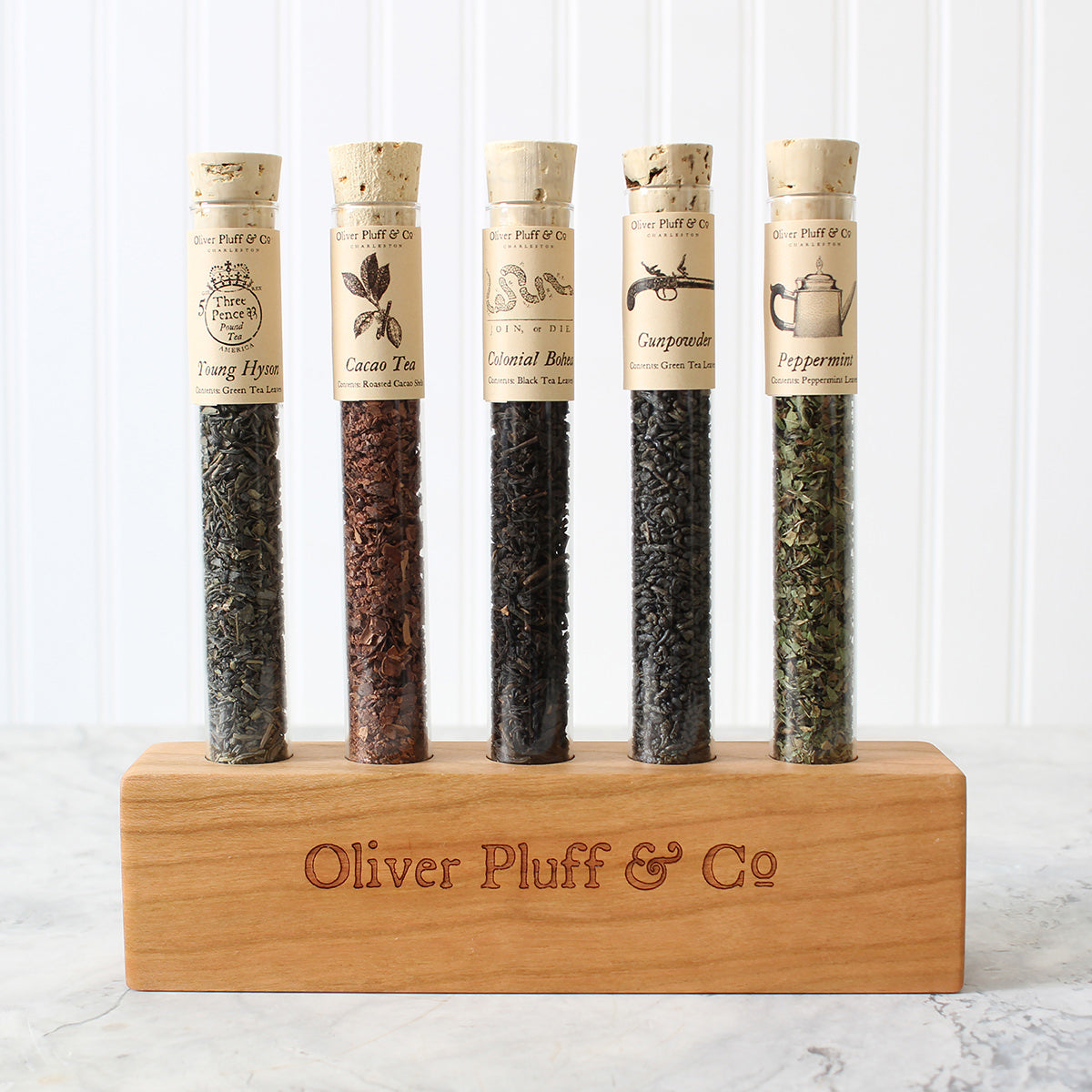Colonial Tea Collection
Colonial Tea Collection
Couldn't load pickup availability
Colonial Tea Collection
Colonial Bohea tea, (pronounced “Boo-hee” - Ukers 510), was by far the largest tea import during colonial times. Sometimes called Bohea Souchong or Lapsang Bohea, the blend originated in China with trade to the British and Dutch East India Companies. It was so popular that the word bohea became the slang term for tea. The blend varied wildly, consisting of broken orange pekoe, pekoe, and souchong dumped in a pile and then sifted, typically the scrap tea of lower quality leaves, but was considered high quality by the colonists.
Cacao Shell Tea Martha Washington enjoyed drinking cacao shell tea, which she made from roasted shells and sipped at breakfast. George Washington wrote to his agent, “She will, . . . thank you to get 20 Lbs of the shells of Cocoa nuts, if they can be had of the Chocolate makers." NOTE: During initial processing and roasting, Cacao Shells may be exposed to Nuts, Soy, and Dairy.
Young Hyson Green tea. Made from young leaves that are thinly rolled to have a long, twisted appearance that unfurls when brewed. Some believe it to have been named after an English tea merchant, Phillip Hyson. Hyson and Young Hyson tea were highly prized by the colonial Americans and tax on hyson was higher than for other teas. During the Boston Tea Party there were 70 chests of Hyson destroyed.
Peppermint Jonas Hanway, an 18th century British author, derided tea for its "sundry evils" and extolled herbal tea as an alternative. Peppermint was first classified in 1753, and was grown in colonial American gardens.
Gunpowder Lightly roasted and tightly rolled green tea- Temple of Heaven grade pinhead gunpowder tea.
Share




